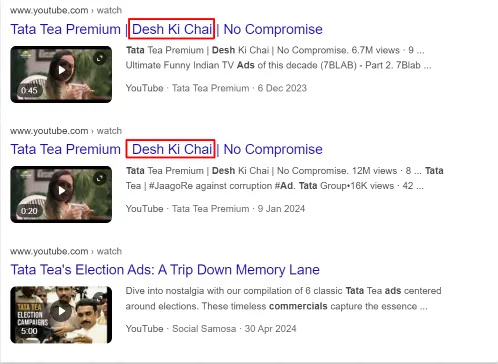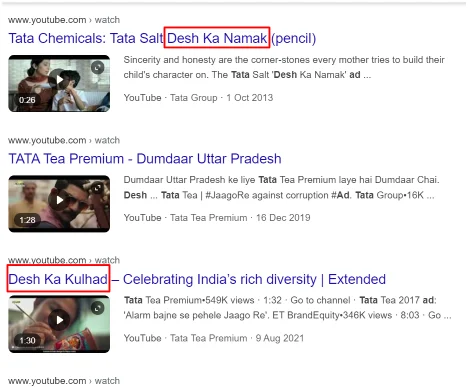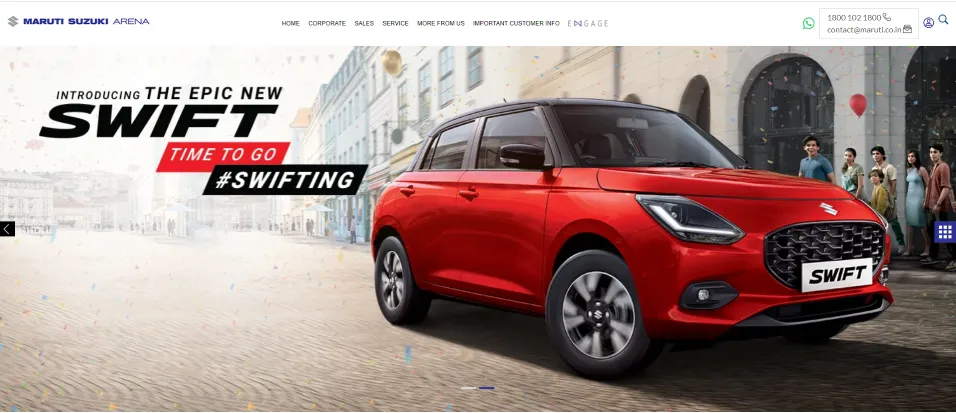
Building a powerful brand strategy can feel overwhelming, especially when you’re juggling a million other responsibilities. You’ve got budgets to handle, deadlines looming and the constant pressure to stand out in a market that’s more competitive than ever.
But don’t worry. Once you have got the brand strategy right, you have solved most of the problems.
After that, it is all about how you execute it.
Let’s understand what is a brand strategy, why it is important and what elements are essential for a good brand strategy.
Table of contents
- What is Brand Strategy?
- And Why Is Brand Strategy So Important?
- But What Makes a Successful Brand Strategy?
- In Conclusion
- Frequently Asked Questions
What is Brand Strategy?
A brand strategy is a detailed, long-term plan to build a unique identity that differentiates your brand in the marketplace. It goes beyond your logo, colours and tagline. It’s about your brand’s mission, values, target audience, messaging and how all these elements come together to shape perceptions.
Simply put, it’s the roadmap for how your brand interacts with the world. It influences how you communicate with customers, the experience they get from your product or service and ultimately the way people talk about your brand.
Without a clear strategy, your brand becomes inconsistent, which can confuse customers and weaken your impact. So let’s understand why it matters in the next section.
And Why Is Brand Strategy So Important?
Imagine you’re building a house. Your brand is like that house—your products, services and visual identity are the walls, windows and furniture. How will they look if the walls have some random blue colour, the windows do not match the vibe of the house and the furniture doesn’t align with the overall aesthetic of the house.
If that’s the case your house won’t have a personality of its own. But what if an interior designer gave you a plan as in what will be the colour of the walls, what furniture you will use and what window style will your home have?
That plan is your brand strategy and the interior designer is your branding agency.
Your brand strategy defines how everything fits together.
Without a brand strategy, you risk putting out mixed messages or worse— alienating your audience. When done right, a brand strategy helps you stand out and fosters customer loyalty and brand equity, which is the value of your brand beyond your products and services.
Take Nike, for example. Their brand strategy revolves around the idea of empowerment. Through their “Just Do It” messaging and their focus on fitness enthusiasts, they’ve built more than a company—they’ve built a movement.
But don’t get it twisted. Brand strategy isn’t just for global giants.
Whether you’re managing a local fast-food chain or some startup, your brand needs a clear direction to grow.
It’s about positioning your business where it needs to be, both in the hearts of customers and in the marketplace.
But What Makes a Successful Brand Strategy?
To create a brand strategy that hits the mark, you need to understand the core elements that make it up.
Let’s break down each one and look at how some brands have mastered these elements.
1. Brand Purpose and Vision
Consider Tata. Their purpose extends beyond profit. It’s more about contributing to society and taking the country forward.
This philosophy is evident in their communication. For instance, “Desh Ka Namak”, “Desh Ki Chai” etc


The Tata Group’s vision is to be a global enterprise that enhances the quality of life of the communities it serves. This purpose has led to a brand that is respected not just for its business success but for its commitment to social responsibility.
To develop your brand’s purpose, ask yourself:
- Why does our brand exist?
- What change do we want to see in the world?
- How can our brand contribute to that change?
Once you’ve nailed your purpose, define where you want your brand to go in five or ten years. What impact do you want to make and how can your brand evolve to get there?
2. Target Audience
This might sound basic, but here’s where many brands go wrong. You need to understand your audience not just demographically, but psychologically.
What are their pain points? What are their motivations? The better you know your audience, the easier it is to create messaging that resonates.
Let’s take Apple as an example. Apple isn’t just for tech-savvy consumers; it’s for affluent people who value simplicity and aesthetics. They target consumers who want devices that are both functional and beautiful and status symbols.
Apple’s marketing speaks to these desires by emphasising ease of use, seamless integration and clean design.
When defining your target audience, go beyond age, gender or location. Think about —-What problems do they face that your brand can solve? What are their aspirations? How do they make buying decisions?
Creating detailed buyer personas based on these insights will help you create messaging that’s simple but impactful.
3. Brand Positioning
Brand positioning defines where your brand fits in the market relative to your competitors. It’s about identifying your unique value proposition—what you offer that others don’t. This is crucial because it shapes how consumers perceive you.
For example, look at Tesla. They’ve positioned themselves as a luxury brand in the electric vehicle space, but they’ve also tapped into the environmentally conscious consumer. They offer innovative, sleek cars with a message of sustainability and cutting-edge technology.
Tesla’s unique position has allowed them to dominate the electric vehicle market while standing out from traditional luxury car brands.
Study the competition and think about what you can do differently. What is it that they are not offering but you are? This will help you attract a very specific set of customers who are genuinely interested in your products.
4. Brand Voice and Messaging
Your brand’s voice is the way you communicate with your audience and your messaging is the specific content you deliver. These elements are crucial because they define the tone and style of all your communications—from ads and social media posts to customer service interactions
Consider Zomato. Their brand voice is witty, relatable and engaging. They use humour and a conversational tone in their marketing and social media, making them feel approachable and fun.
This brand voice resonates well with their audience, especially younger consumers who enjoy a light-hearted approach.
You will never feel looking at their communication that this is not Zomato.
That’s how developing a consistent brand voice helps ensure that your messaging is always aligned with your identity.
Are you formal or casual? Friendly or professional? Humorous or serious? Once you’ve nailed your voice, create messaging that reflects your brand’s purpose and speaks to your audience’s pain points and desires.
Partner with a branding agency to make sure that your brand voice and messaging are up to the mark. It’s a cherry on top if it’s a digital marketing agency that also does branding. This way your branding concerns will also be solved and marketing it on digital platforms will become easier.
way your branding concerns will also be solved and marketing it on digital platforms will become easier.
5. Brand Values
Your brand values are the core principles that guide everything your business does, from the way you treat your employees to how you engage with customers. Think of them as the foundation that shapes your brand’s identity and reputation. When your values genuinely align with those of your audience, it creates a bond that goes beyond transactions – it builds trust, loyalty and a long-term relationship.
Take Patanjali, for instance. The brand’s values are deeply rooted in purity, natural ingredients and promoting a holistic lifestyle. Patanjali sells a philosophy of health and wellness. And that’s what resonates with its audience.
Similarly, you should also identify what values resonate with your target audience. Are they looking for sustainability, innovation or perhaps transparency in how you do business? When you build your brand around these shared values, you will create a connection that goes beyond the product, fostering loyalty and a deeper sense of community.
6. Brand Experience
Brand experience is how your customers interact with your brand across all touchpoints, from the moment they see your ad to the time they use your product or service.
A strong brand experience is like a memorable story—it’s consistent, leaves a lasting impression and builds a real connection with your audience.
Let’s talk about Maruti Suzuki. They’ve done an incredible job in creating a brand experience that people can trust. Think about it—when you hear “Maruti Suzuki,” what probably comes to mind is reliability, affordability and accessibility. But this isn’t just marketing fluff. Maruti Suzuki has carefully built this experience across every single interaction their customers have with the brand.
Take their dealerships, for example. They have an extensive network across India making it super easy for customers to check out and purchase their vehicles.
Then there’s their website—it is designed to be simple and user-friendly, which is no accident. Users can book a test drive, book a showroom visit and check out their cars on the website itself.

They know their audience values ease and convenience and they reflect that in the digital experience too.
Even after you’ve purchased a car, their after-sales service reinforces that promise of reliability. Take a look here

You feel taken care of at every stage and that’s what makes the whole experience so seamless. Your brand should also do the same.
Think about all the different ways people come into contact with you—whether it’s your social media, website, packaging or even the tone of voice in your customer service. Every touchpoint should feel like a natural extension of who you are as a brand.
It may sound overwhelming but it’s not when you partner with the best branding agency. The agency itself will guide you on how to create a brand experience.
In Conclusion
Building a brand strategy takes time, effort and a deep understanding of your market and audience. But when done right, it can transform your business from just another company into a brand that people love and trust.
Remember, your brand strategy is your blueprint—it guides how you communicate, how you’re perceived and ultimately how you grow.
Having a solid brand strategy will surely set you up for success. If you are still doubtful or have questions, please write to us at hello@florafountain.com.
We’ll help you find your unique voice and create a brand that leaves a lasting impression.
Good luck and happy branding!



